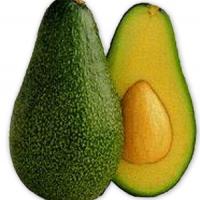What is the Glycemic Index?

The glycemic index or GI ranks carbohydrates according to their effect on our blood glucose levels. The glycemic index ranks foods on how they affect our blood glucose levels. This index measures how much your blood glucose increases in the two or three hours after eating. The glycemic index is about foods high in carbohydrates. Foods high in fat or protein don't cause your blood glucose level to rise much.
Glucose is given an arbitrary value of 100 and other carbs are given a number relative to glucose. Faster carbs (higher numbers) are great for raising low blood sugars and for covering brief periods of intense exercise. Slower carbs (lower numbers) are helpful for preventing overnight drops in the blood sugar and for long periods of exercise.
Choosing low GI carbs - the ones that produce only small fluctuations in our blood glucose and insulin levels - is the secret to long-term health reducing your risk of heart disease and diabetes and is the key to sustainable weight loss.
Glycemic index of foods
GI values can be interpreted intuitively as percentages on an absolute scale and are commonly interpreted as follows:
Classification GI range Examples Low GI 55 or less most fruit and vegetables (except potatoes, watermelon), grainy breads, pasta, legumes/pulses, milk, products extremely low in carbohydrates (fish, eggs, meat, nuts, oils), brown rice Medium GI 56 - 69 whole wheat products, basmati rice, orange, sweet potato, table sugar, most white rices (eg, jasmine), High GI 70 and above corn flakes, baked potato, watermelon, croissant, white bread, extruded cereals (eg, Rice Krispies), straight glucose (100)-
Choosing The Best Diet Is Possible
To find the results you would like within the diet you want to do, p
-
How to Lose Baby Weight Fast and Keep It Off
Too many moms resort to crash dieting and carb-cutting thin
-
Weighing-in On Low Carb Diets
With all of the conflicting studies and fuzzy interpretation of infor
-
Low carb diets best bet to achieve lasting weight loss
燗 new study has found diets that reduce the surge in blood
-
Does The Low-carbohydrate Diet Work?
With slim people filling the catwalks and the red carpet premieres in
-
Tips For Reducing Your Weight With Low Carb Diets
Many nutritionists believe that low carb diets would be the best for
- DON'T MISS
- Ketosis: Mystery or Misconception? -- Part 2
- Low Carb No-bake Cheesecake
- Could Low Carb Eating Help You Loosing Weight?
- Facts About The Excessive Protein, Low Carb Diet
- 5 Easy Tips to Picking Healthy Bread
- South Beach Diet Bars
- Can European Diets Make you Slim?
- Legumes - The Base Of A Low Carb Diet Plan
- Chocolate Truffles
- Low Carbohydrate Article Archive #2




